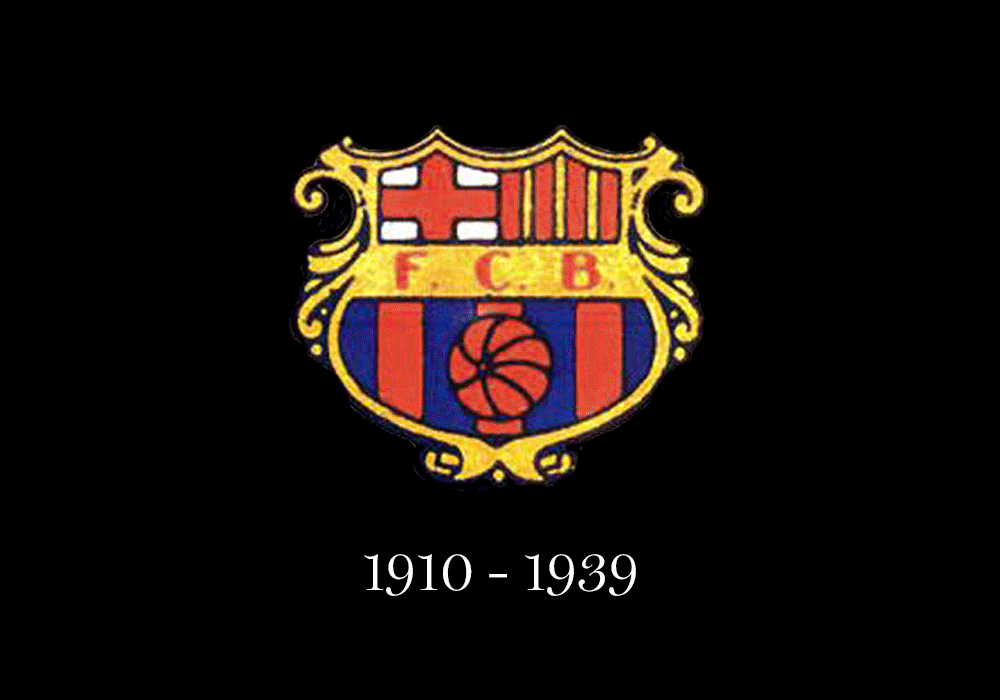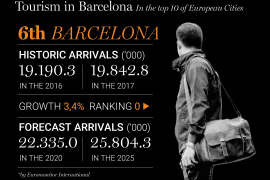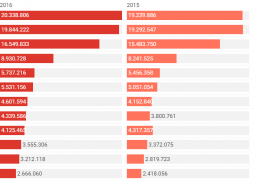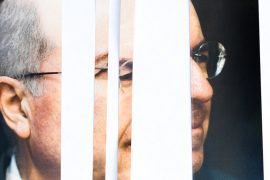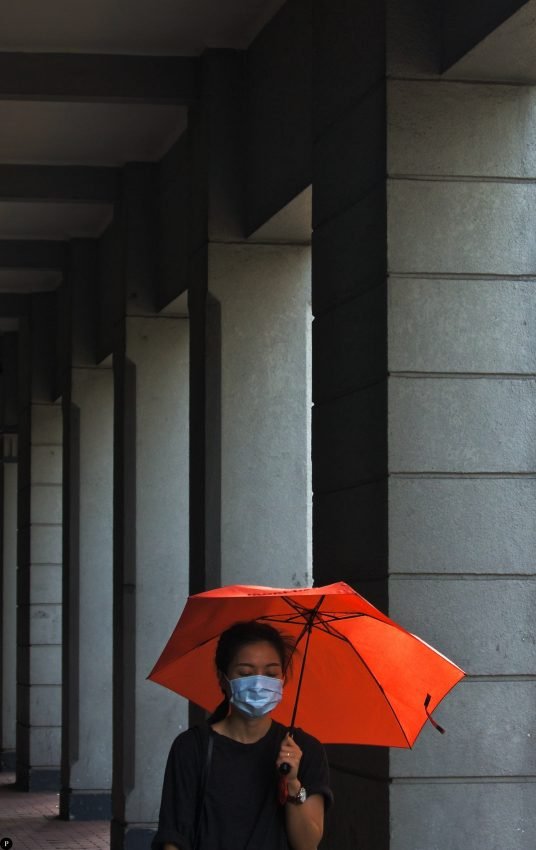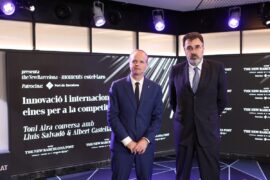[dropcap letter=”B”]
arcelona Football Club announces that they will submit to the Commitment Assembly the endorsement for a change of badge. This sudden out-of-the-blue proposal introduces substantial changes: the acronym disappears and the number of blue and red stripes is reduced. A streamlined shield, like a sweet wrapper. The Barça-friendly sports press defends the decision on the grounds that “a powerful brand calls for a clear, modern and mighty badge”.
Times are changing and not all institutions or doctrines measure up. Businesses know it, and great sports corporations know it too. One takes it for granted that nobody wants to fall short of progress, and everybody wants to grow and adapt to the circumstances and, that the world of football should be subjected to a market economy that smashes the past and displays it in museums, where it cannot be a nuisance.
Since the main asset offered by football is intangible, it is its image that sells. There is then competition for visibility, colonization of tv channels, computers and phones across the world. For them, Barça is not a club wearing sometimes a blue and purplish-red shirt, but a club wearing many other colour kits.
Within the narrow limits awarded by democracy at Barça’s, its members can either accept or reject such proposal of change. What historical event justifies a new corporate image? What substantial modification of the club’s essence is this proposal a response to? What is wrong with the current badge?
The team cannot be identified with colours it not always wears, nor with players who are far from eternal. On the shirt, several symbols compete for visibility: the logo of the sports brand, the usual ads, sponsors and badge. The only symbol that always remains and will continue to do so, should the club intend to remain true to itself, is the latter, the badge.
On this particular issue, the pot-shaped emblem adopted in 1910, after an open contest among members won by Santiago Femenia, who had even played a match with Barça in 1906. Since then, it has gone through small changes to adapt to aesthetic tastes of times or for legal reasons, when the Franco regime “Spanified” the club’s name and reduced the four stripes of the Catalan flag. The last modification occurred in 2002, during the great football slump with Gaspart as president. The change before then was in 1975.
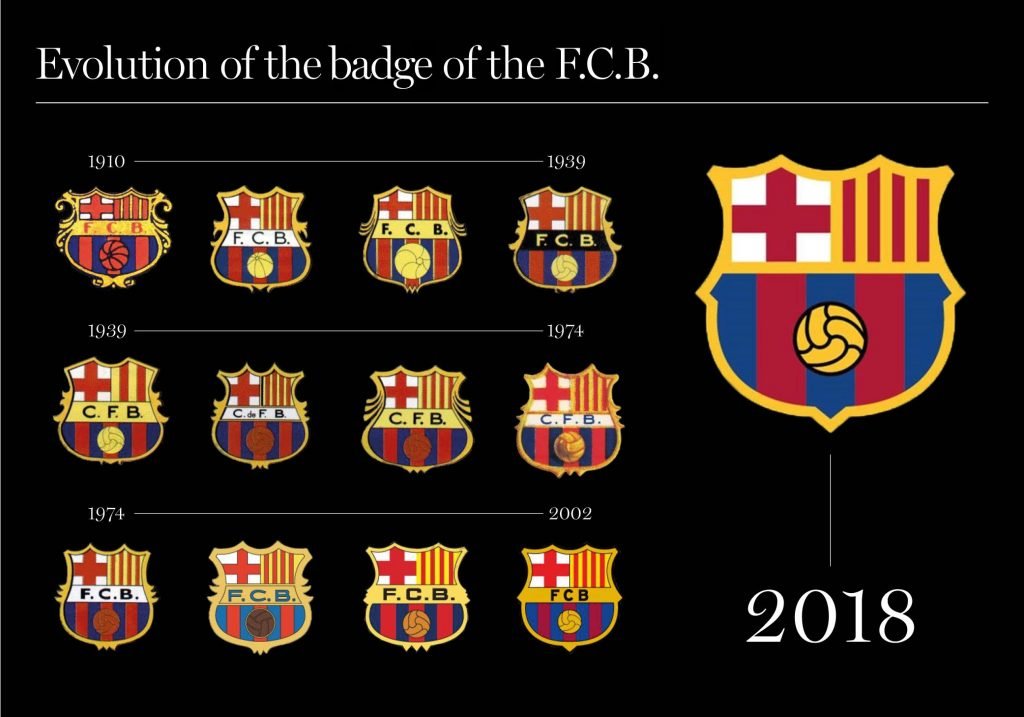
Within the narrow limits awarded by democracy at Barça’s, its members can either accept or reject such proposal of change. What historical event justifies a new corporate image? What substantial modification of the club’s essence is this proposal a response to? What modification of the club’s essence responds this rebranding to? What is wrong with the current badge?
If we take a look at the club’s webpage, we perceive that, surprisingly, they take it for granted: “Barça updates its badge”, they claim. It is now “more uniform, more harmonious, brighter”, but these improvements can be hardly unbiased. They claim that the new crest “upgrades its reproduction capacity, specially in the increasingly important digital media”. I feel the club members deserve a more dignified and carefully worded explanation instead of a text whose author is either ignorant or just plain evil.
But let us not make it more complicated. It suffices to propose a new interpretation of the well-trodden Barça mantra of being more than a club. This more than a club means now that the club is (also) a brand. A type of product manufactured by a particular company under a particular name, as the Oxford dictionary dictates. Instead, the word has suffered a metonymical transfer, whereby the brand (the part) has substituted the club (the whole).
With a change of badge, the Board of Directors of Barça is trying to catch up with other European sports society that have dramatically changed their badges. They assume that by leaving out the letters that might cause estrangement to Japanese fans, they will increase their followers, and hence, their benefits. Well, wrong assumption. What Barça should sell (as selling is what it’s all about, to my dismay) is an example of tradition unaffected by the whims of fashion, and the image of a club that can tell the difference between modernity and stupidity. It could also be that, in order to be on the winning side and keep its dignity, Barça only needed to show itself as a sport-loving club, just like philosophers love wisdom. Are Barça’s decision- makers really sure that the solution is standardisation? If this is so, then the club is running the risk of going from being “more than a club” to becoming “one more club”.
We will have to see whether the Commitment Assembly, for once, will do what is required.

